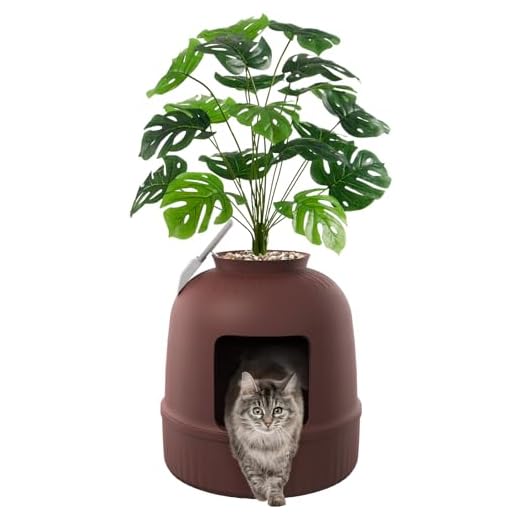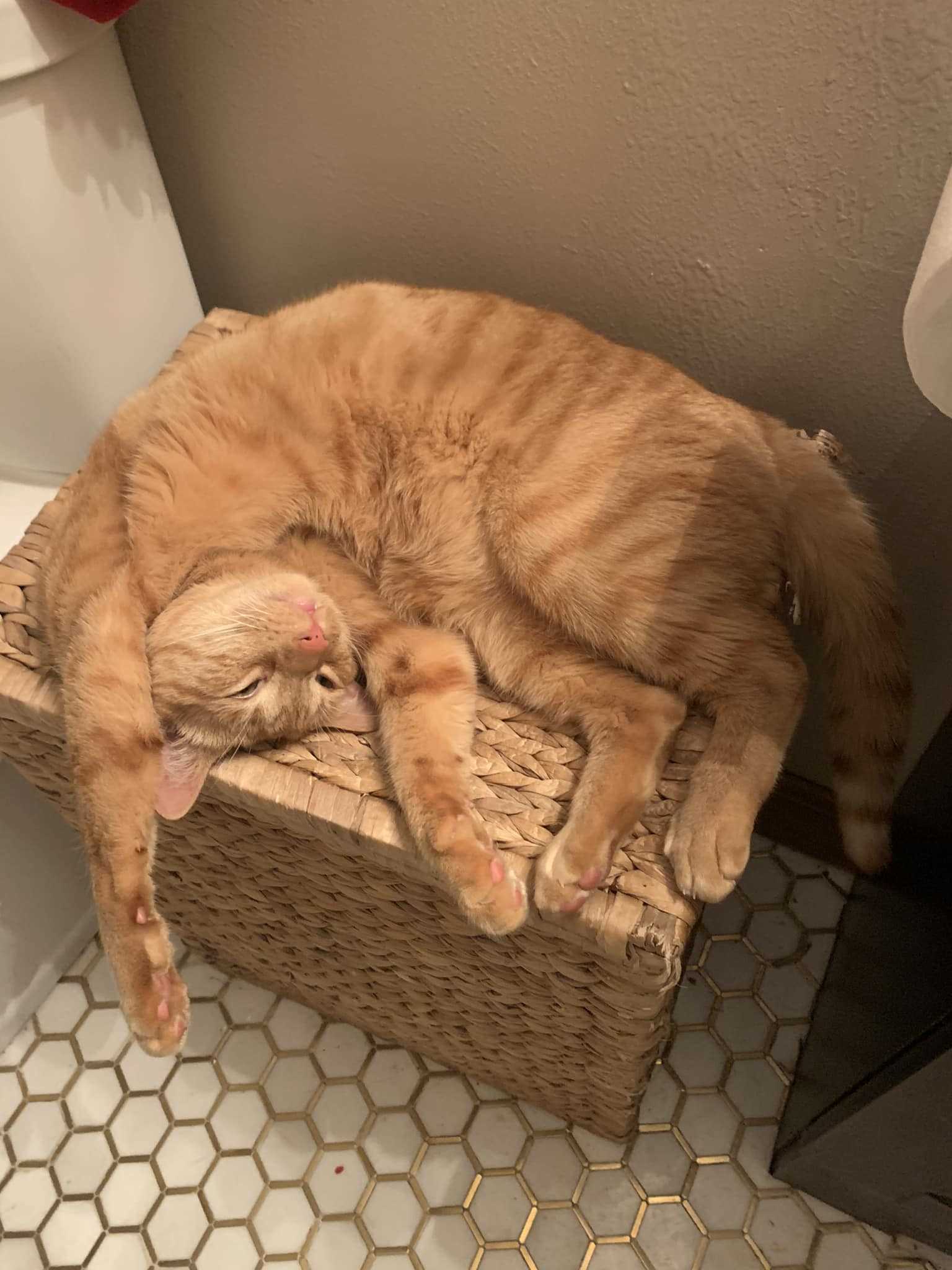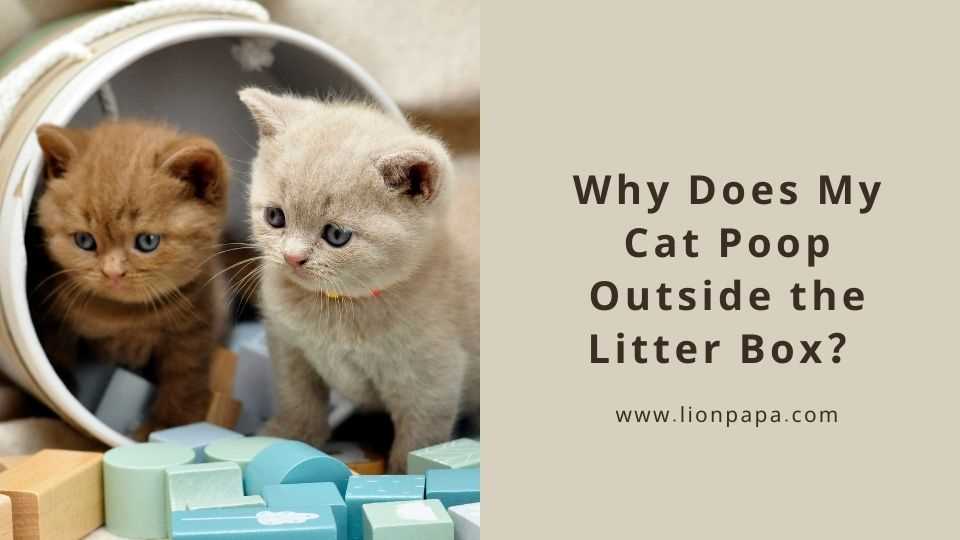



When I find myself leaving little surprises in places other than my designated area, there are several factors at play. First, stress can trigger this behavior. Changes in the household, like new pets or visitors, may cause anxiety, making me seek comfort elsewhere. It’s crucial to maintain a calm environment.
Another reason could be health-related issues. Digestive troubles or urinary infections can lead to discomfort, prompting me to avoid the usual spot. Regular vet check-ups are essential to ensure everything is functioning well.
Sometimes, the cleanliness of my designated area plays a significant role. If it’s not fresh and tidy, I might choose a more appealing alternative. Keeping my space clean and ensuring the right type of substrate can make a world of difference in my habits.
Lastly, my preferences matter too. I might simply dislike the texture or scent of the material in my usual area. Experimenting with different types can help find what suits me best. Always remember to observe my behavior and habits closely; they often tell a story about what I need or what might be bothering me.
Understanding Medical Issues Leading to Litter Box Aversion

Regular check-ups with a veterinarian are crucial. Health problems can cause discomfort, leading to avoidance of designated areas. Urinary tract infections, gastrointestinal disorders, or arthritis can make using a litter area painful. If there’s sudden change in behavior, a visit to the vet is necessary.
Pay attention to any signs of distress, such as straining or crying during elimination. These symptoms may indicate underlying health concerns that need immediate attention. Keeping a close eye on diet and hydration is also important, as changes in these can affect bowel and bladder health.
Consider the type of litter being used. Some materials may irritate sensitive paws or noses. It’s worth trying different brands to find one that is more comfortable. Similarly, ensure that the litter area is clean, as a dirty environment can discourage usage.
Stress can also lead to avoidance behaviors. Changes in environment, new pets, or loud noises can contribute to anxiety. Creating a calm space and providing safe hiding spots can help mitigate this stress.
Monitoring behavior and maintaining open communication with a vet ensures health issues are addressed promptly. Keeping my space clean and comfortable enhances my well-being and encourages proper habits.
Environmental Factors That Influence Toilet Behavior

Ensure the litter area is placed in a quiet, low-traffic zone. A bustling environment can be stressful and deter proper usage. Consider relocating the tray if it’s near noisy appliances or high-activity areas.
Maintain cleanliness by scooping daily and changing the substrate regularly. A dirty tray can lead to avoidance behaviors. Use unscented options to prevent any aversion triggered by strong odors.
Evaluate the type of substrate used. Some prefer fine textures, while others might favor coarser materials. Experiment with different options to identify the preferred choice.
Temperature matters. A cold surface can be uninviting. Ensure the area is warm and comfortable, especially during colder months.
Observe the presence of other animals. Territorial disputes or aggression from housemates can cause anxiety and lead to inappropriate elimination. Provide separate spaces for each pet to alleviate tension.
Lighting is also significant. A well-lit area can feel safer and more inviting. Avoid dark corners that may instill fear or discomfort.
Consider any recent changes in the household. New furniture, renovations, or changes in routine can impact comfort levels and influence behavior.
Evaluate accessibility. Ensure that the tray is easy to enter and exit, especially for those with mobility challenges. A high-sided container might deter some from using it.
Training Techniques to Encourage Proper Use of the Litter Box
Start associating the designated area with positive experiences. Utilize treats or affection immediately after using the appropriate spot. This reinforces the behavior I want to see.
Keep the environment clean. Regularly scoop and wash the container to ensure it remains inviting. A fresh setting is much more appealing than a dirty one.
Consider the type of material used. I prefer certain textures under my paws. Experimenting with various substrates can lead to finding one that I enjoy more. If you’re curious about scents, check if do cats like the smell of lemons affects my behavior.
Limit access to areas where accidents occur. Redirecting me to the proper space consistently helps establish routines. If I seem resistant, it might be helpful to explore ways to address this, such as learning how to stop your cat from spraying.
Gradually introduce me to the litter area if I seem hesitant. Patience and encouragement go a long way. Be gentle and understanding in this process.
Monitor my overall comfort. Sometimes, stress or changes in the household can impact my habits. A calm environment encourages better behavior.
Finally, consistency in training is key. Repeating positive reinforcement and maintaining a clean space will help me feel secure and happy while using my designated area.
Video:
When I find myself leaving little surprises in places other than my designated area, there are several factors at play. First, stress can trigger this behavior. Changes in the household, like new pets or visitors, may cause anxiety, making me seek comfort elsewhere. It’s crucial to maintain a calm environment.
Another reason could be health-related issues. Digestive troubles or urinary infections can lead to discomfort, prompting me to avoid the usual spot. Regular vet check-ups are essential to ensure everything is functioning well.
Sometimes, the cleanliness of my designated area plays a significant role. If it’s not fresh and tidy, I might choose a more appealing alternative. Keeping my space clean and ensuring the right type of substrate can make a world of difference in my habits.
Lastly, my preferences matter too. I might simply dislike the texture or scent of the material in my usual area. Experimenting with different types can help find what suits me best. Always remember to observe my behavior and habits closely; they often tell a story about what I need or what might be bothering me.
Understanding Medical Issues Leading to Litter Box Aversion

Regular check-ups with a veterinarian are crucial. Health problems can cause discomfort, leading to avoidance of designated areas. Urinary tract infections, gastrointestinal disorders, or arthritis can make using a litter area painful. If there’s sudden change in behavior, a visit to the vet is necessary.
Pay attention to any signs of distress, such as straining or crying during elimination. These symptoms may indicate underlying health concerns that need immediate attention. Keeping a close eye on diet and hydration is also important, as changes in these can affect bowel and bladder health.
Consider the type of litter being used. Some materials may irritate sensitive paws or noses. It’s worth trying different brands to find one that is more comfortable. Similarly, ensure that the litter area is clean, as a dirty environment can discourage usage.
Stress can also lead to avoidance behaviors. Changes in environment, new pets, or loud noises can contribute to anxiety. Creating a calm space and providing safe hiding spots can help mitigate this stress.
Monitoring behavior and maintaining open communication with a vet ensures health issues are addressed promptly. Keeping my space clean and comfortable enhances my well-being and encourages proper habits.
Environmental Factors That Influence Toilet Behavior

Ensure the litter area is placed in a quiet, low-traffic zone. A bustling environment can be stressful and deter proper usage. Consider relocating the tray if it’s near noisy appliances or high-activity areas.
Maintain cleanliness by scooping daily and changing the substrate regularly. A dirty tray can lead to avoidance behaviors. Use unscented options to prevent any aversion triggered by strong odors.
Evaluate the type of substrate used. Some prefer fine textures, while others might favor coarser materials. Experiment with different options to identify the preferred choice.
Temperature matters. A cold surface can be uninviting. Ensure the area is warm and comfortable, especially during colder months.
Observe the presence of other animals. Territorial disputes or aggression from housemates can cause anxiety and lead to inappropriate elimination. Provide separate spaces for each pet to alleviate tension.
Lighting is also significant. A well-lit area can feel safer and more inviting. Avoid dark corners that may instill fear or discomfort.
Consider any recent changes in the household. New furniture, renovations, or changes in routine can impact comfort levels and influence behavior.
Evaluate accessibility. Ensure that the tray is easy to enter and exit, especially for those with mobility challenges. A high-sided container might deter some from using it.
Training Techniques to Encourage Proper Use of the Litter Box
Start associating the designated area with positive experiences. Utilize treats or affection immediately after using the appropriate spot. This reinforces the behavior I want to see.
Keep the environment clean. Regularly scoop and wash the container to ensure it remains inviting. A fresh setting is much more appealing than a dirty one.
Consider the type of material used. I prefer certain textures under my paws. Experimenting with various substrates can lead to finding one that I enjoy more. If you’re curious about scents, check if do cats like the smell of lemons affects my behavior.
Limit access to areas where accidents occur. Redirecting me to the proper space consistently helps establish routines. If I seem resistant, it might be helpful to explore ways to address this, such as learning how to stop your cat from spraying.
Gradually introduce me to the litter area if I seem hesitant. Patience and encouragement go a long way. Be gentle and understanding in this process.
Monitor my overall comfort. Sometimes, stress or changes in the household can impact my habits. A calm environment encourages better behavior.
Finally, consistency in training is key. Repeating positive reinforcement and maintaining a clean space will help me feel secure and happy while using my designated area.
Video:
When I find myself leaving little surprises in places other than my designated area, there are several factors at play. First, stress can trigger this behavior. Changes in the household, like new pets or visitors, may cause anxiety, making me seek comfort elsewhere. It’s crucial to maintain a calm environment.
Another reason could be health-related issues. Digestive troubles or urinary infections can lead to discomfort, prompting me to avoid the usual spot. Regular vet check-ups are essential to ensure everything is functioning well.
Sometimes, the cleanliness of my designated area plays a significant role. If it’s not fresh and tidy, I might choose a more appealing alternative. Keeping my space clean and ensuring the right type of substrate can make a world of difference in my habits.
Lastly, my preferences matter too. I might simply dislike the texture or scent of the material in my usual area. Experimenting with different types can help find what suits me best. Always remember to observe my behavior and habits closely; they often tell a story about what I need or what might be bothering me.
Understanding Medical Issues Leading to Litter Box Aversion

Regular check-ups with a veterinarian are crucial. Health problems can cause discomfort, leading to avoidance of designated areas. Urinary tract infections, gastrointestinal disorders, or arthritis can make using a litter area painful. If there’s sudden change in behavior, a visit to the vet is necessary.
Pay attention to any signs of distress, such as straining or crying during elimination. These symptoms may indicate underlying health concerns that need immediate attention. Keeping a close eye on diet and hydration is also important, as changes in these can affect bowel and bladder health.
Consider the type of litter being used. Some materials may irritate sensitive paws or noses. It’s worth trying different brands to find one that is more comfortable. Similarly, ensure that the litter area is clean, as a dirty environment can discourage usage.
Stress can also lead to avoidance behaviors. Changes in environment, new pets, or loud noises can contribute to anxiety. Creating a calm space and providing safe hiding spots can help mitigate this stress.
Monitoring behavior and maintaining open communication with a vet ensures health issues are addressed promptly. Keeping my space clean and comfortable enhances my well-being and encourages proper habits.
Environmental Factors That Influence Toilet Behavior

Ensure the litter area is placed in a quiet, low-traffic zone. A bustling environment can be stressful and deter proper usage. Consider relocating the tray if it’s near noisy appliances or high-activity areas.
Maintain cleanliness by scooping daily and changing the substrate regularly. A dirty tray can lead to avoidance behaviors. Use unscented options to prevent any aversion triggered by strong odors.
Evaluate the type of substrate used. Some prefer fine textures, while others might favor coarser materials. Experiment with different options to identify the preferred choice.
Temperature matters. A cold surface can be uninviting. Ensure the area is warm and comfortable, especially during colder months.
Observe the presence of other animals. Territorial disputes or aggression from housemates can cause anxiety and lead to inappropriate elimination. Provide separate spaces for each pet to alleviate tension.
Lighting is also significant. A well-lit area can feel safer and more inviting. Avoid dark corners that may instill fear or discomfort.
Consider any recent changes in the household. New furniture, renovations, or changes in routine can impact comfort levels and influence behavior.
Evaluate accessibility. Ensure that the tray is easy to enter and exit, especially for those with mobility challenges. A high-sided container might deter some from using it.
Training Techniques to Encourage Proper Use of the Litter Box
Start associating the designated area with positive experiences. Utilize treats or affection immediately after using the appropriate spot. This reinforces the behavior I want to see.
Keep the environment clean. Regularly scoop and wash the container to ensure it remains inviting. A fresh setting is much more appealing than a dirty one.
Consider the type of material used. I prefer certain textures under my paws. Experimenting with various substrates can lead to finding one that I enjoy more. If you’re curious about scents, check if do cats like the smell of lemons affects my behavior.
Limit access to areas where accidents occur. Redirecting me to the proper space consistently helps establish routines. If I seem resistant, it might be helpful to explore ways to address this, such as learning how to stop your cat from spraying.
Gradually introduce me to the litter area if I seem hesitant. Patience and encouragement go a long way. Be gentle and understanding in this process.
Monitor my overall comfort. Sometimes, stress or changes in the household can impact my habits. A calm environment encourages better behavior.
Finally, consistency in training is key. Repeating positive reinforcement and maintaining a clean space will help me feel secure and happy while using my designated area.











